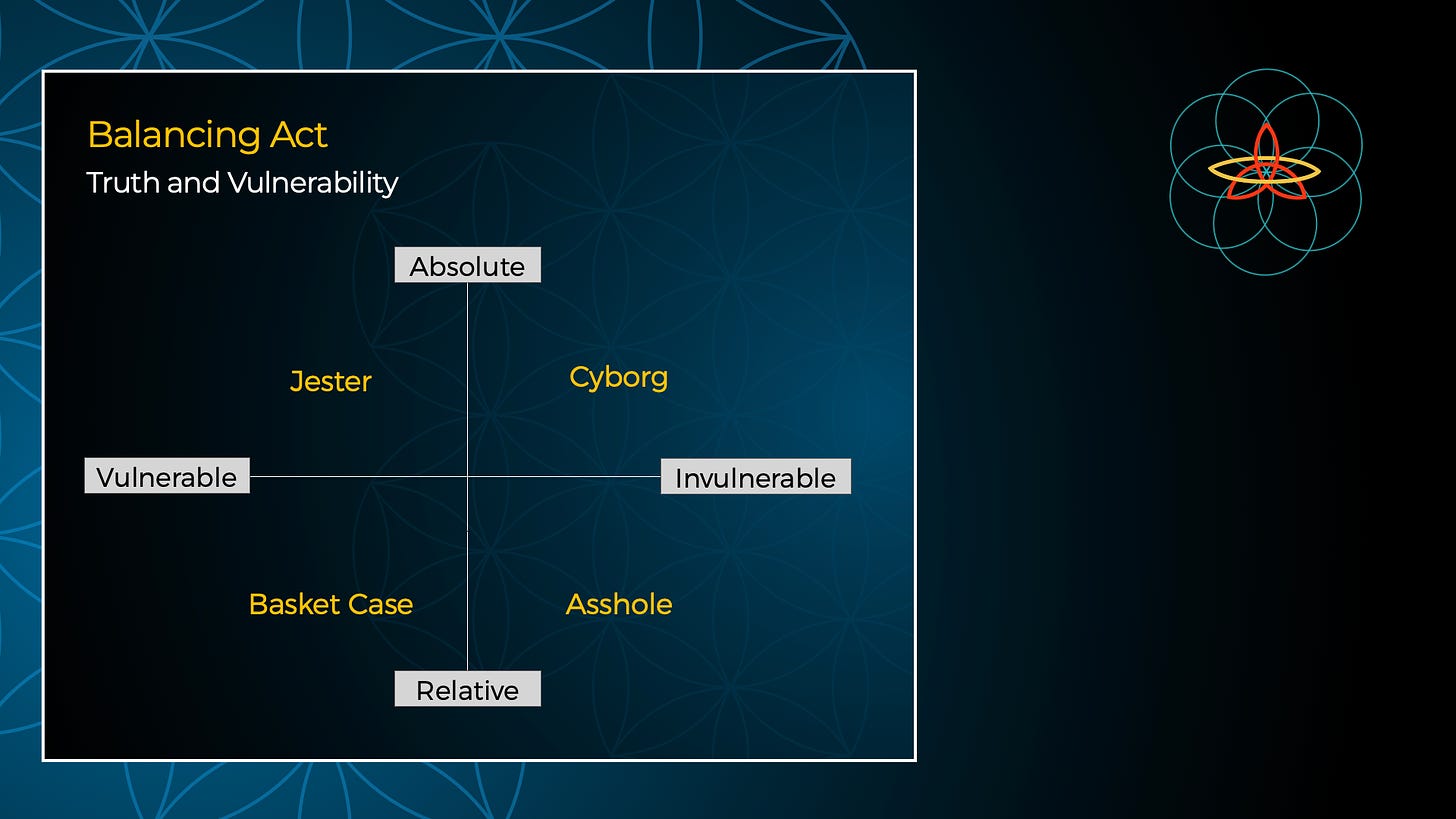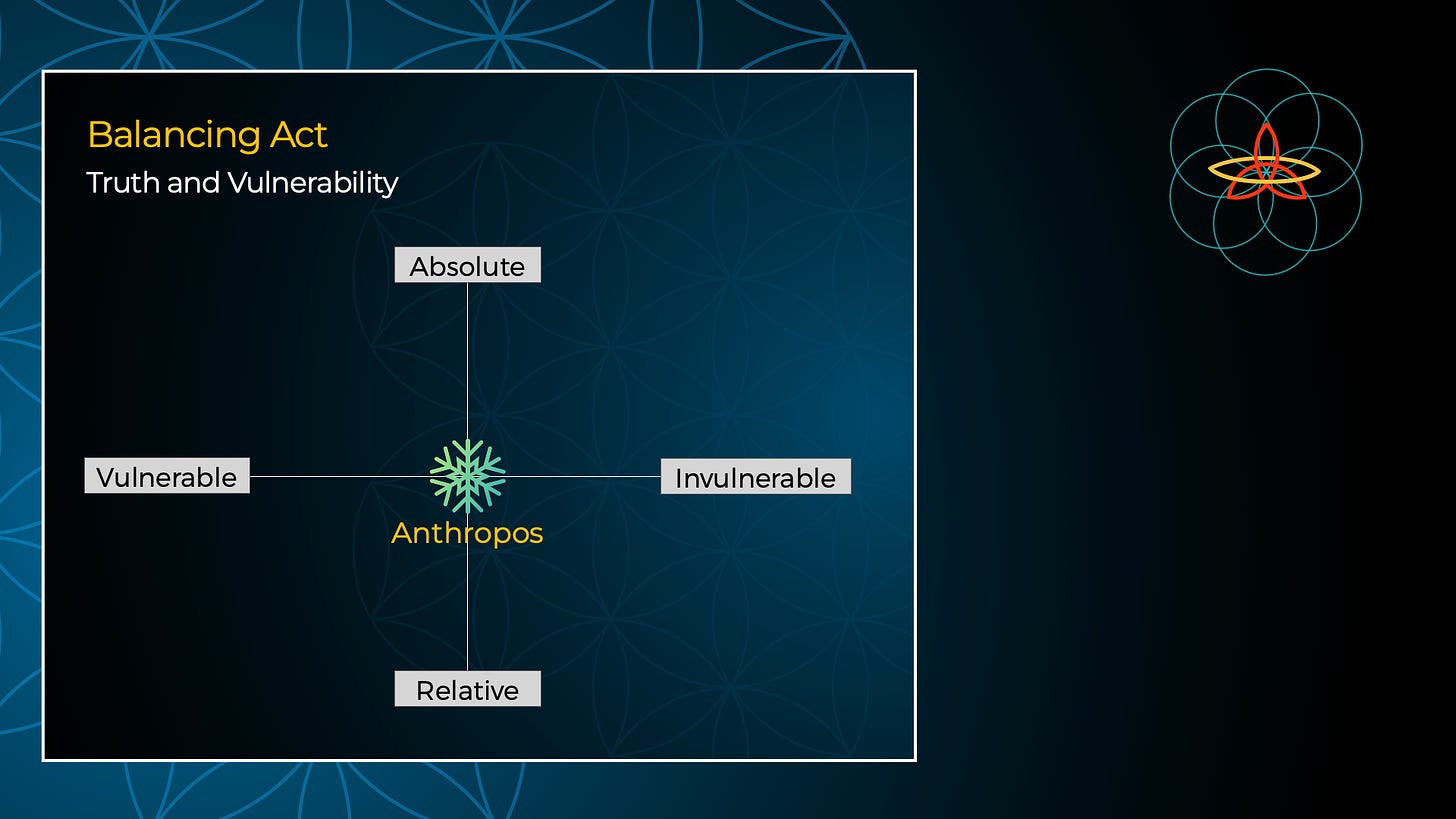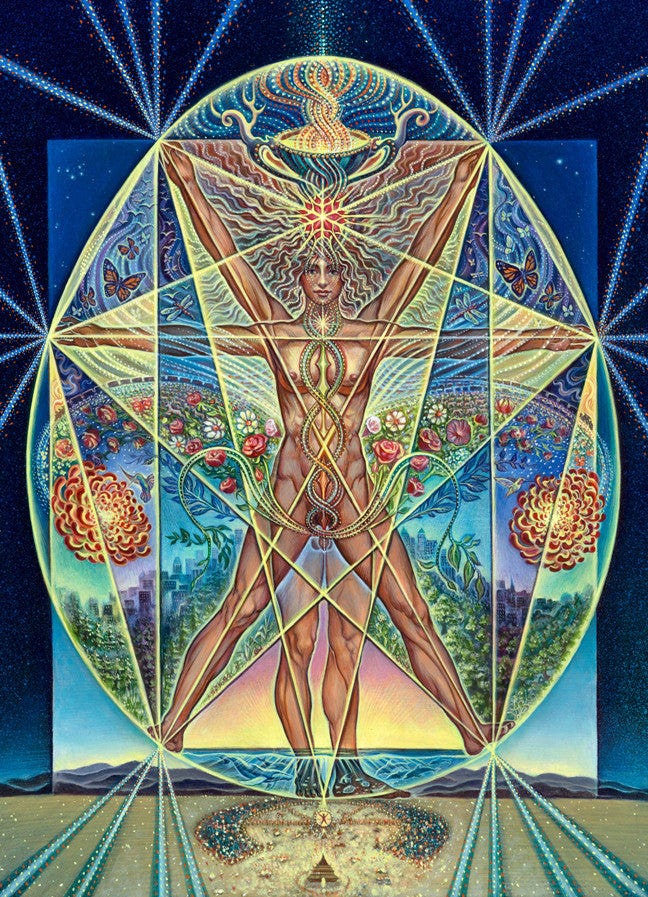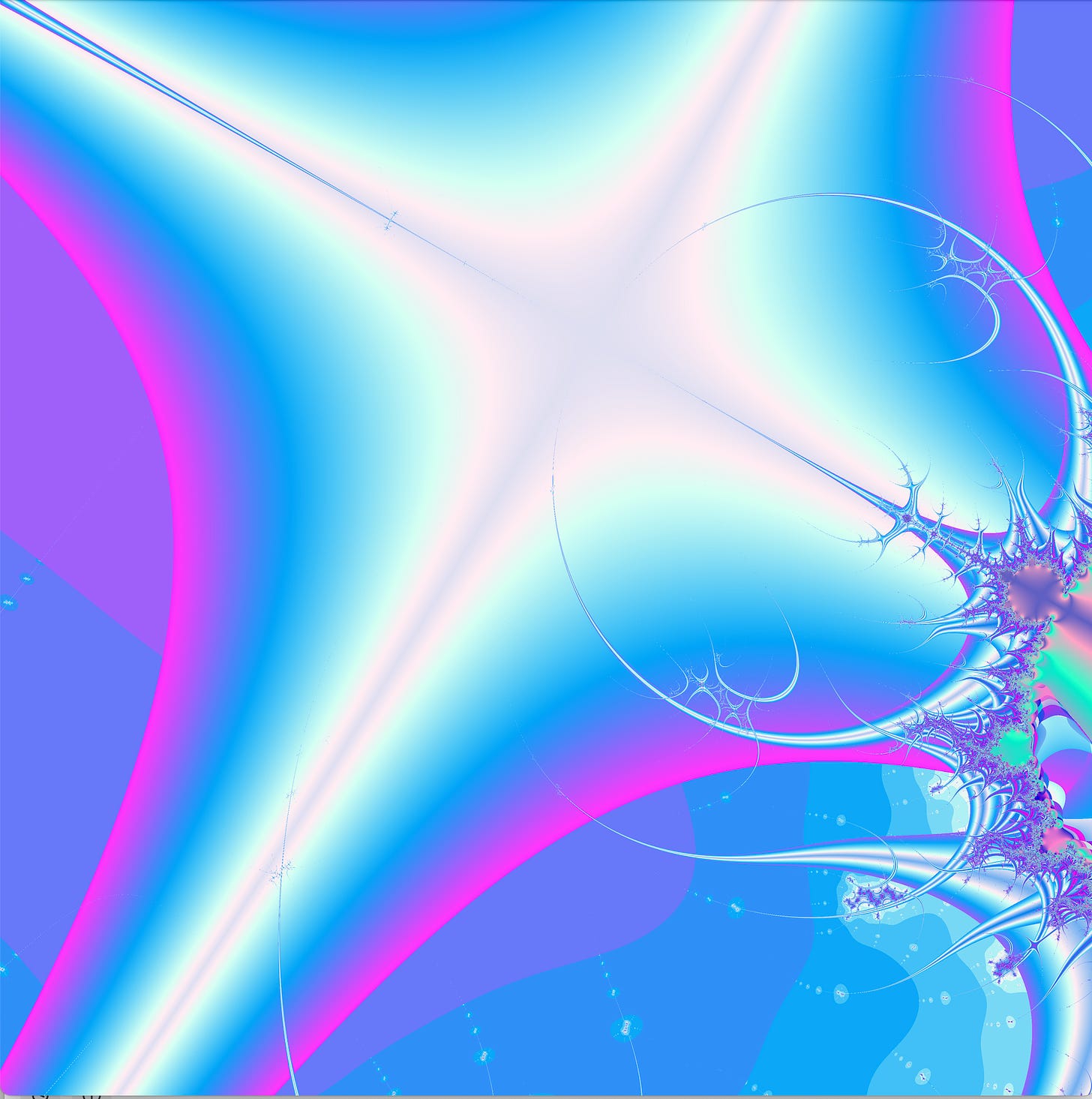Alright. Finally to the end of our series on making sense of the world, AKA: Ontology!
That’s not a term you’d expect to encounter outside of stuffy philosophy classes, but it’s becoming increasingly relevant in our post-truth age.
We began with Pascal/Ockham/Bayesian triangles, expanded to ontological buckets, and most recently explored reality parachutes–all as analogies for making sense in a confusing and hectic world.
(worth going back and reading if you’re just dropping in now to get full context)
Our final metaphor was that of the “ontological wingsuiter”–the daredevil sensation seeker who surfs the frothy edge of indeterminate reality. Foregoing certainty and a definite narrative of what is or isn’t “really” happening. All without throwing the parachute to the safety of Consensus Reality.
So that’s one way to take in all of the infinite weirdness of non-ordinary states, conspiracy theories, existential threats, and just plain old complex and confusing life.
Keep the throttle wide open, move above either/or, right/wrong binaries and surf the quantum foam where everything is possible, and nothing is certain.
As the old Chinese Farmer said (via Alan Watts) “good luck? bad luck? Who knows???”
That’s all fairly heady though. It can even turn into a kind of bravado–the rad extreme sports wingsuiter that few of us will ever be, risking life, limb or sanity for a shot at glory.
#DMTbros (and they’re almost always bros, aren’t they?)
So as we bring this series to a close, let’s bring it all the way Home, too.
Into the lived experience of what it might actually feel like to pry open the Overton Window of reality and stick our heads into the Great Wide Yonder and have a look around.
Because as some folks noted in the comments from earlier posts, when describing, filtering and sorting Ultimate Reality into handy triangles and buckets, there comes a point where you’ve got to abandon all the training wheels, and rules of thumb, and jump into the Ocean itself.
And that tends to defy tidy descriptions!
But let’s take a crack at it anyways, and see if one concluding thought experiment can help us integrate Infinite reality with our oh-so Finite minds and lives.
It’s helpful to think of our search for truth on a vertical axis, with Capital T Truth at the top, and lower case “t” everyday truth at the bottom.
Absolute Truth is the Burning Bush, the Ark of the Covenant in Indiana Jones. It’s paint peeling, not for mere mortals kinda stuff.
As Dr. John Lilly, one of the ballsiest psychonauts of the 20th century remarked, “Cosmic Love (AKA Absolute Truth) is ruthless and utterly indifferent! It doesn’t care whether you want to hear its lessons or not.”
Relative truths are all of those cultural hand me downs we called Bucket #1 Ontologies in prior posts. They feel “truthy” but they’re socially constructed more than divinely revealed.
To that vertical spectrum, lets add a horizontal axis to make a 2x2 grid. That will give us four quadrants of people to better understand how this typically breaks down.
If the vertical axis was Truth (in it’s varying degrees of intensity) we can describe the horizontal axis as Vulnerabilty, or our openness to the experience of said Truths.
Below the equator, we’ve got the folks inhabiting the “relative truth” of Consensus Reality.
In the lower left quadrant (access to Relative Truth only, but with High Vulnerability) –If they’re completely overwhelmed by simply living in regular old waking reality, you might call them a Basket Case. Never mind gods and angels, simply holding down a job, relationships and rent are more than enough challenge.
In the lower right quadrant, you have your basic bitches. All there is to Life is material accomplishment–bucks, likes and clicks. Their whole existence boils down to getting laid or paid. Seeking pleasure and avoiding pain. But they score really low on empathy and emotional intelligence (Invulnerability). Let’s call them simply, Assholes.
Above the midline of this graph, things get a little more interesting.
That’s where folks have opened up the aperture of Reality a little wider (in keeping with Pascal’s Wager-better to conceive the inconceivable, just in case it turns out to be true).
In response to all that additional information and possible inspiration, there are a couple of options: The upper right hand quadrant represents someone who sees the ones and zeros of ultimate reality streaming past, but their heart hasn’t really been touched by it all.
Think of Effective Altruists like Sam Bankman Fried, or Oxford philosophers Nick Bostrum or Open AI founder Sam Altman. Calmly calculating statistical odds of killing or saving trillions of lives based on probabilistic outcomes of their latest thought experiment. All head, but no heart, we can call this lot Cyborgs.
They’re seduced by knowledge masquerading as wisdom.
They’d be cuter if they weren’t so fucking dangerous!
In the final quadrant, the upper left, we have those folks who’ve touched Source, glimpsed the realm of Faerie, stared too long at the Sun, and lived to tell about it.
But they’re never quite right after, either. In Donald Hoffman’s Fitness Beats Truth paradigm, they’re all Truth, no Fitness.
This was Syd Barrett, the “crazy diamond” guitarist of Pink Floyd we mentioned in the last post. Acid addled to infinity.
Returning back to straight life with all of its plastic conventions and rickety norms seems impossible. They’ve ripped off the monkey suit of cultural conditioning and spend the rest of their lives streaking around in their birthday suits.
We can call these folks Jesters.
Touched. If you’re not put off by their utter unconventionality, you might be rattled by the trickster truths they hold. Poking fun at the Kings of Consensus, amusing themselves, and risking their necks.
But like their Basket Case cousins, Jesters can have a tough time keeping it together long enough to thrive in Mugglesville. They can struggle to take the pantomime seriously, once they’ve grokked the Cosmic Giggle.
***
So now that we’ve covered all four quadrants, and seen the pros and cons of each, what’s left?
Clearly, they all seem a bit imbalanced in one way or another.
For those seeking ultimate Truth, it’s important to remember the trickster Jester addled by what they’ve seen. You can definitely fly too close to the Sun.
We might also be humbled by the limits of the disembodied intellectual Cyborgs. They can’t know what they don’t know because they can’t feel what’s missing from their calculations.
And for both the Basket Case and the Asshole below the equator line, we can defer to Socrates’ observation, “the unexamined life is not worth living.”
But if each of these four personality types, the Basket Case, the Asshole, the Trickster and the Cyborg–all represent some imbalance, then the question becomes, where should we try to locate ourselves on this matrix?
The obvious answer is smack dab in the middle of it all.
Dipped into the Mysto deeply enough to gain some perspective on our daily struggling and striving, on the fleeting nature of our lives, and the silliness of our tribal primate status games.
But not so deeply dunked in the Cosmic Pudding that we drown and never make it back to solid ground.
On the horizontal axis, we need to remain open enough to the vulnerability, the exquisite tenderness of this fragile existence that we can feel for ourselves and each other.
But not so overwhelmed by the wound of the world that it breaks us, or prompts us to close our hearts to anything but our own agenda.
So what might we call that person who strikes the balance, who sits at the center of Truth and Vulnerability?
Anthropos is one possible name, drawn from the Greek notion of initiated and balanced human.
Leonardo gave us perhaps the most enduring image of this in his Vitruvian Man painting. Visionary artist Amanda Sage has updated it to Vitruvian Human. It’s a nice visual and worth a good bit more than a thousand words…
But while “splitting the difference” and “meeting in the middle” often sound like mellow compromises, this one is anything but.
It costs, as T.S. Eliot observed, “not less than everything.”
That juxtaposition—of being in the world (horizontal axis) but not of it (vertical axis), is both the best and worst thing about the human condition: the blinding light and joy of peak experience followed by the inevitable return to the constraints of our flawed existence. It’s a never-ending oscillation. And getting pulled between those two poles is both agony and ecstasy. Catharsis and Ecstasis. It’s the Hegelian Dialectic to end all dialectics.
There’s no cutting corners, there’s no skipping steps. If we fixate on one element at the expense of the others, we fall out of balance.
If we deny the sacred, the mundane will crush us. If we deny the mundane, the sacred will burn us.
But once we accept both, we die to our lives of separation.
This is what we mean when we talk of this initiatory process as the Blissfuck Crucifiction. It really is the Agony and the Ecstasy. Both. Forever.
We are off the hook of our neurotic searching for something more. But we’re on the cross of bearing witness to the Full Catastrophe of the human condition.
“Ain’t no saint without a past,” Dolly Parton reminds us, “or no sinner without a future.” We’re never fully fixed. We’re never totally broken.
And the moment we stop trying to wriggle off that commitment, something beautiful happens. At the crossroad of our lives, that’s where we complete the alchemy.
Like Dorothy in The Wizard of Oz, tired of her flat-ass and dusty life in Kansas, we have to run away to find what we’re looking for. We seek magic, only to realize that there truly isn’t any place like Home.
“Always and already,” Indian philosopher Nisargadatta observes, “the Other World is this world, rightly seen.”
We are reborn as Anthropos. Rather than yearning for transcendence and escape, we come to appreciate the preciousness of these brief mortal lives.
Isn’t that why the gods and angels have always been jealous of us anyway? Humans are the existential mayflies of the universe. With life spans so brief that every moment matters to us, in a way that the immortals can never taste. We have prefrontal cortexes and opposable thumbs, and for a fleeting few decades we’re here to love and lose, to fight and fuck, to create and destroy, to yearn and grieve.
If Carl Sagan was right when he said, “We are a way for the universe to know itself. Some part of our being knows this is where we came from . . . we are made of starstuff,” then direct experience is the only way we get to validate that truth.
Once we’ve proven it to ourselves beyond a shadow of a doubt, we’re given the gift of returning fully to these lives of ours.
***
Anthropos, twice born, Adam Kadmon, bodhisattva—they’ve gone by different names over the ages. East and West.
But today, it doesn’t even need to be that fancy. HomeGrown Humans are all around us. Teachers, farmers, and firefighters. Doctors, nurses, and parents. Soldiers, singers, and carpenters. Leading us towards a future where we can unlock the intelligence and creativity in our bones. HomeGrown humans, being human, doing human, grieving human. Down among the people, with helping hands.
(so that’s a wrap in our whole Post-Conventional Operating System series of posts! Hope you dug ‘em and found it helpful.
We’re for sure spending more and more time in non-ordinary states at a time when there’s increasingly complex and consequential stuff happening in our world, at the same time that we’re experiencing a collapse in old narratives and shared meaning-making. Having some operating system to handle all of that seems more essential than ever. Thanks for reading along, and curious how any/all of it lands for you!)









Thank you for writing this series. It clarifies some of the more abstract but important concepts you teach. This one might be the hardest to grasp, and maybe that's the point. It seems much of this goes beyond intellectual understanding and needs the right experiences to truly grasp. Having this series laid out as you have done will help translate future experiences in that deeper understanding. Work in progress. Thanks again Jamie.
You are on the button.